S-11
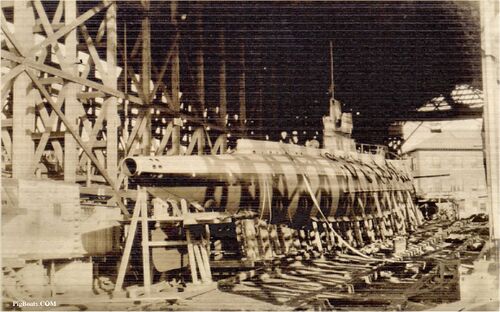
Photo in the private collection of Ric Hedman.
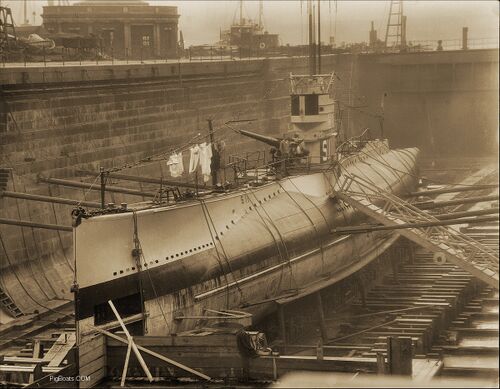
S-11 in dry dock at Boston Navy Yard in Charlestown, MA., circa 1924, prior to her transit of the Panama Canal in October of that year enroute to California and then Hawaii. Some sort of work is going on at the bow in and around the torpedo tubes. The view is somewhat blocked by a barge that is in the dock with S-11. A block and tackle has been rigged and hangs over that location. Some crew has been doing laundry. A crewman stands on the deck near the gun.
Courtesy of the Boston Public Library, Leslie Jones Collection.
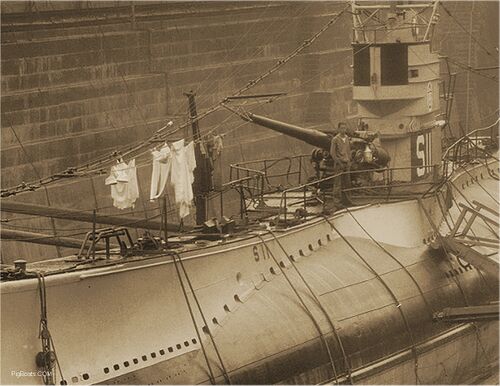
Courtesy of the Boston Public Library, Leslie Jones Collection.
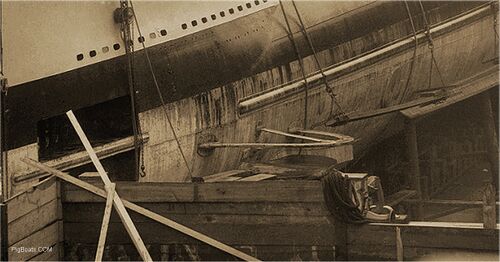
Courtesy of the Boston Public Library, Leslie Jones Collection.
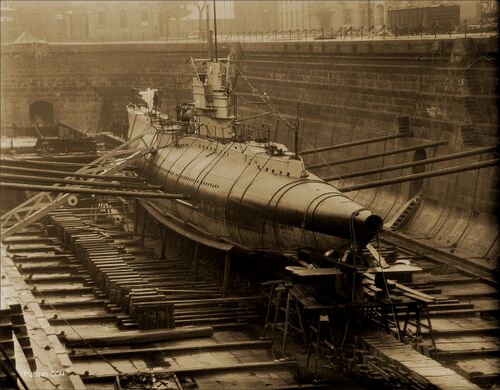
Just visible on the aft deck is a hump that covers new mufflers for her diesel engines. These mufflers are larger than the original ones, and are probably water cooled, necessitating the larger covering and the distinctive hump.
Courtesy of the Boston Public Library, Leslie Jones Collection.
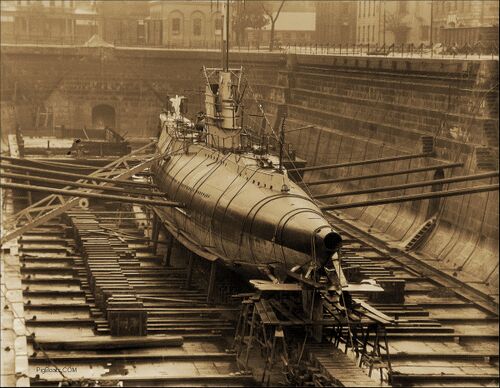
Courtesy of the Boston Public Library, Leslie Jones Collection.
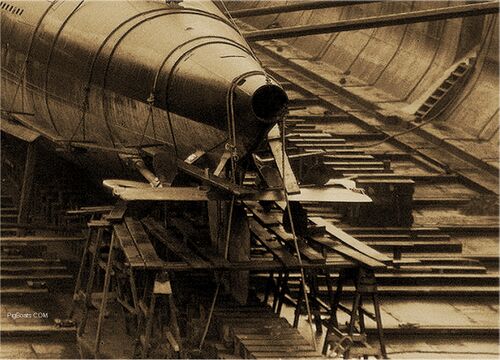
Courtesy of the Boston Public Library, Leslie Jones Collection.
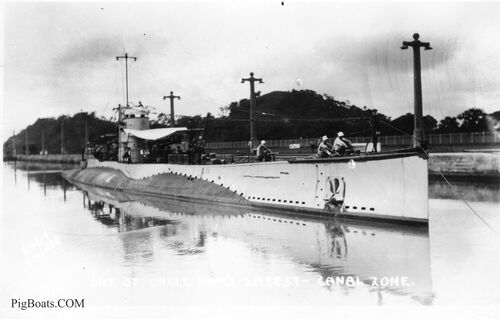
S-11 waiting to be towed into one of the Panama Canal locks, October 1924. The boat was enroute from the east coast to her new homeport in Hawaii, via a stop in California. Transiting the canal can be a long and tedious process, and the oppressive tropical heat and humidity made conditions below quite difficult for the crew. Here S-11 has canvas awnings rigged topside where the men can gain some measure of relief.
The boat's standard Navy stockless anchor is visible in its housing on the starboard side of the bow. In addition, the boat also had a mushroom anchor mounted on her keel forward, housed between the torpedo tubes. The mushroom anchor was used as a means of mooring the boat while submerged in shallow water.
Aft of the two men sitting at the bow, another crewman is sitting near the T-shaped rotating head for the SC series sonar. The SC was one of the first USN submarine-based sonars that was capable of acquiring a bearing to the target. An operator with headphones below deck turned the head via a handwheel, and could thus home in on a bearing to the target, albeit not with pin-point accuracy.
Photo in the private collection of David Johnston.
Page created by:
Ric Hedman & David Johnston
1999 - 2023 - PigBoats.COM©
Mountlake Terrace, WA, Norfolk, VA
webmaster at pigboats dot com
